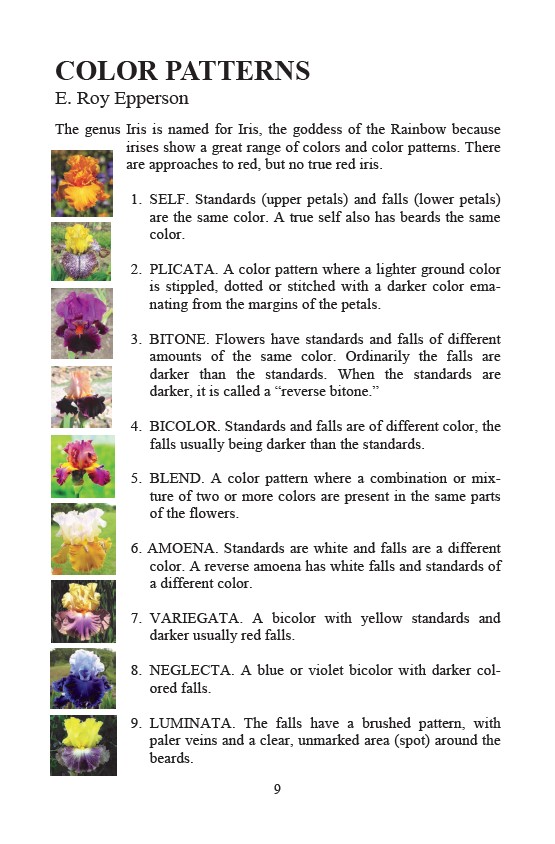
COLOR PATTERNS
E. Roy Epperson
The genus Iris is named for Iris, the goddess of the Rainbow because
irises show a great range of colors and color patterns. There
are approaches to red, but no true red iris.
1. SELF. Standards (upper petals) and falls (lower petals)
are the same color. A true self also has beards the same
color.
2. PLICATA. A color pattern where a lighter ground color
is stippled, dotted or stitched with a darker color ema-nating
from the margins of the petals.
3. BITONE. Flowers have standards and falls of different
amounts of the same color. Ordinarily the falls are
darker than the standards. When the standards are
darker, it is called a “reverse bitone.”
4. BICOLOR. Standards and falls are of different color, the
falls usually being darker than the standards.
5. BLEND. A color pattern where a combination or mix-ture
of two or more colors are present in the same parts
9
of the flowers.
6. AMOENA. Standards are white and falls are a different
color. A reverse amoena has white falls and standards of
a different color.
7. VARIEGATA. A bicolor with yellow standards and
darker usually red falls.
8. NEGLECTA. A blue or violet bicolor with darker col-ored
falls.
9. LUMINATA. The falls have a brushed pattern, with
paler veins and a clear, unmarked area (spot) around the
beards.